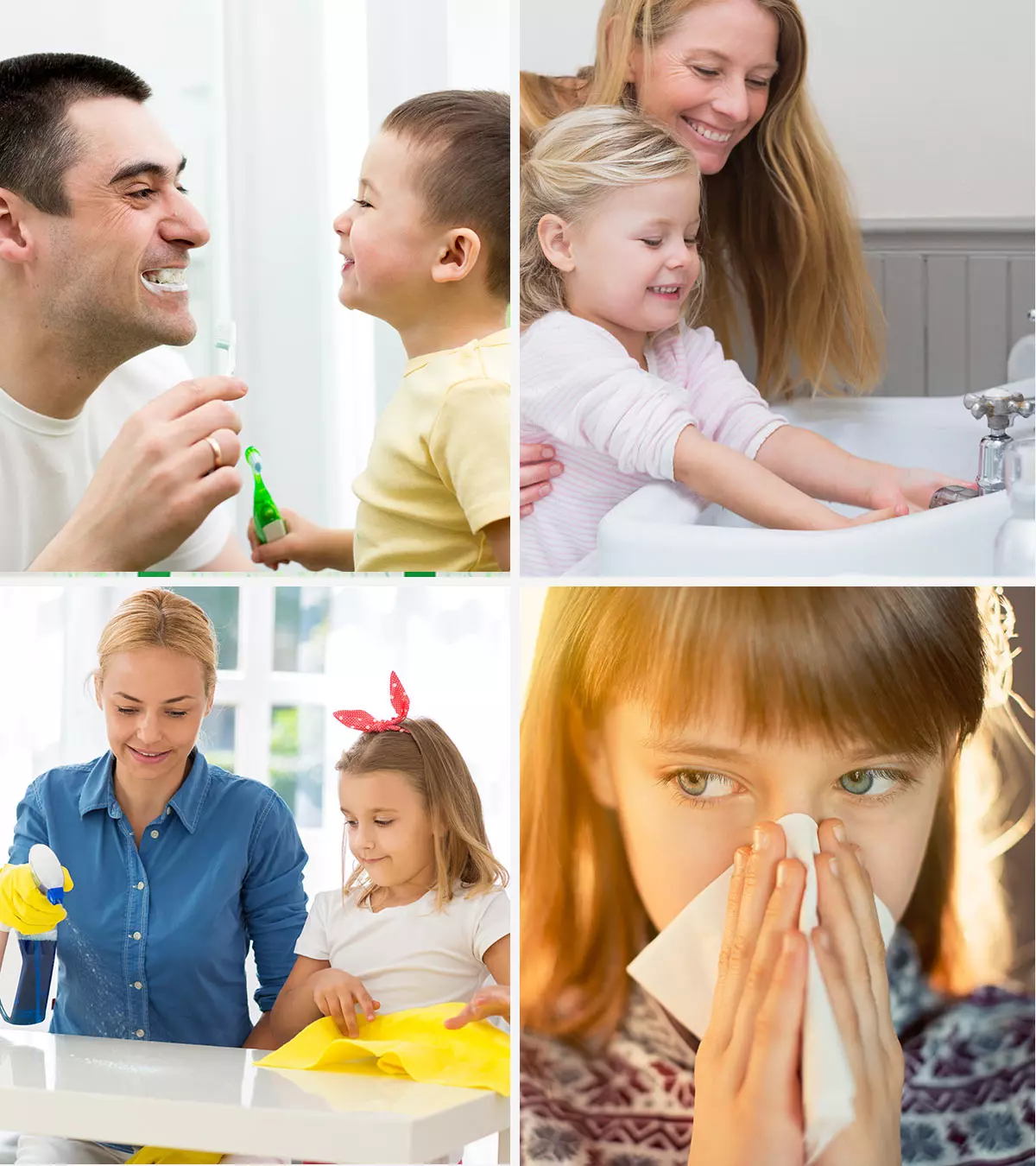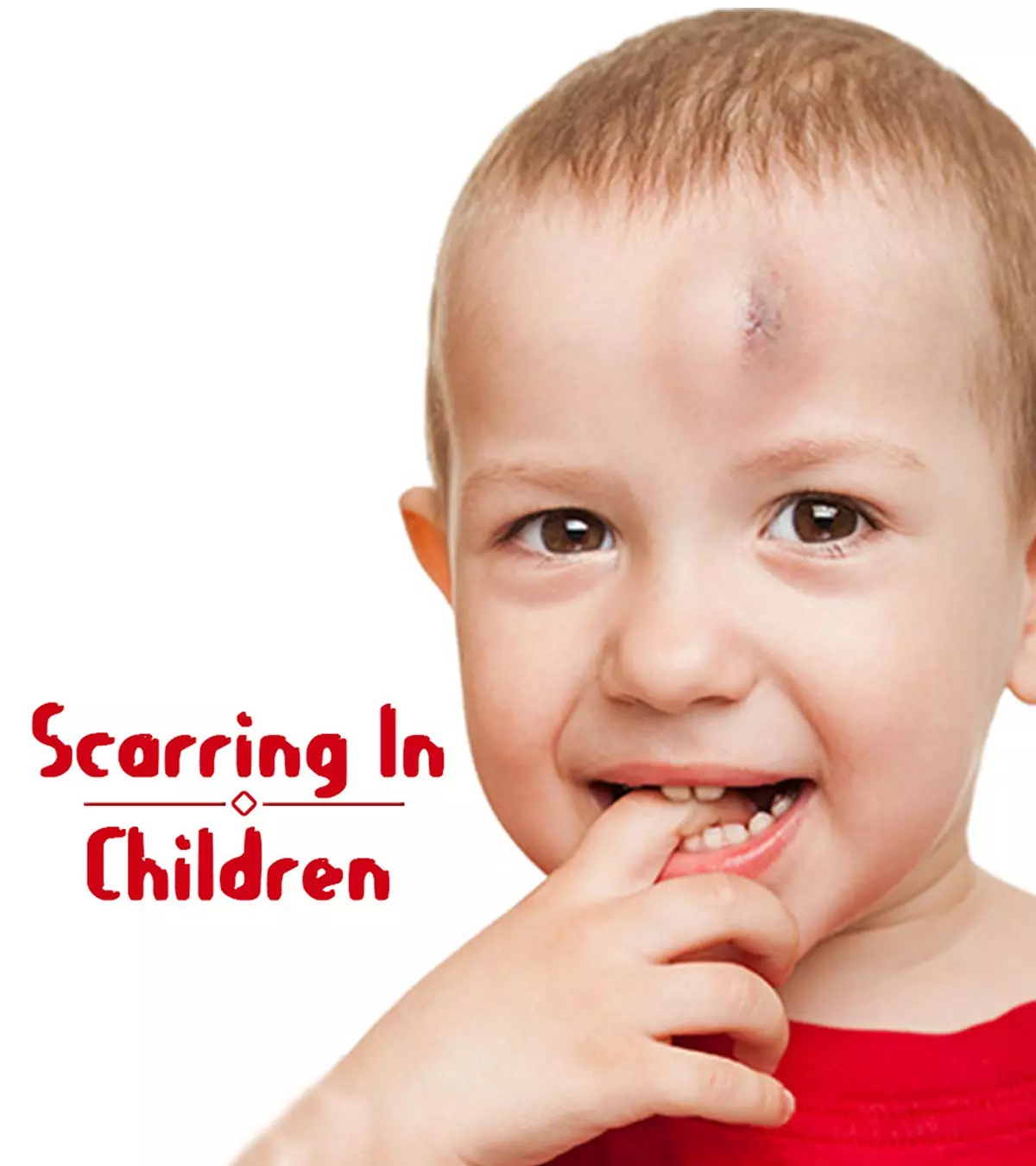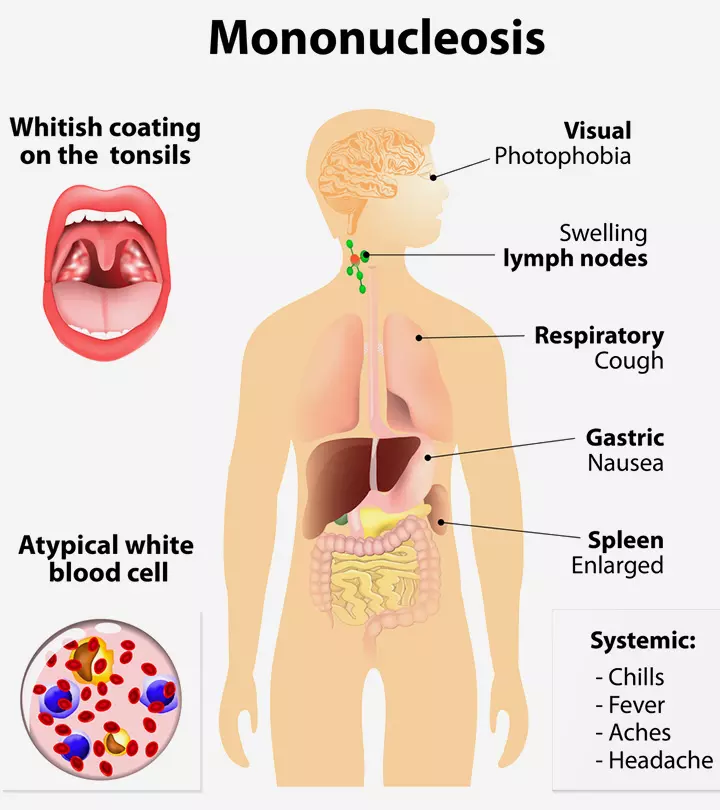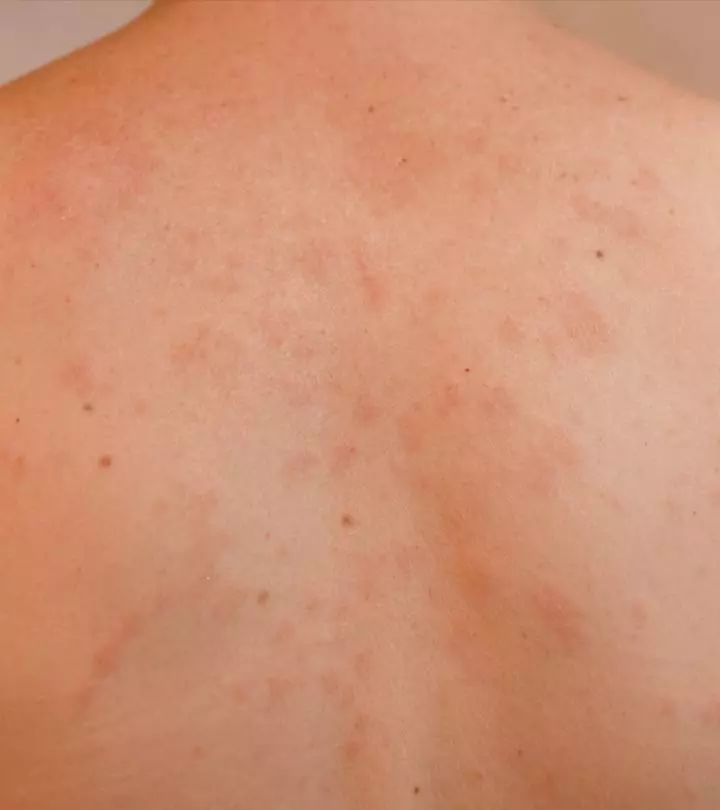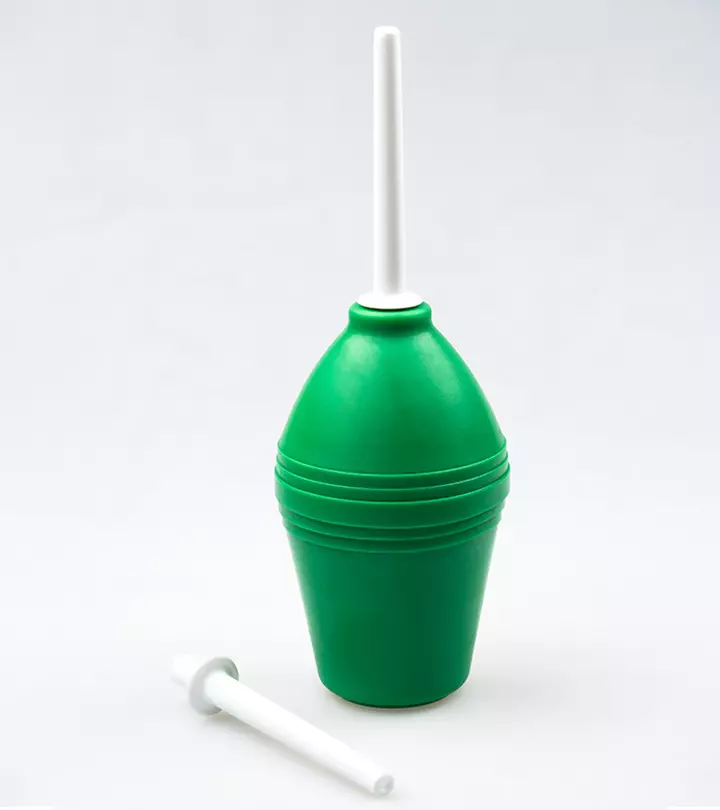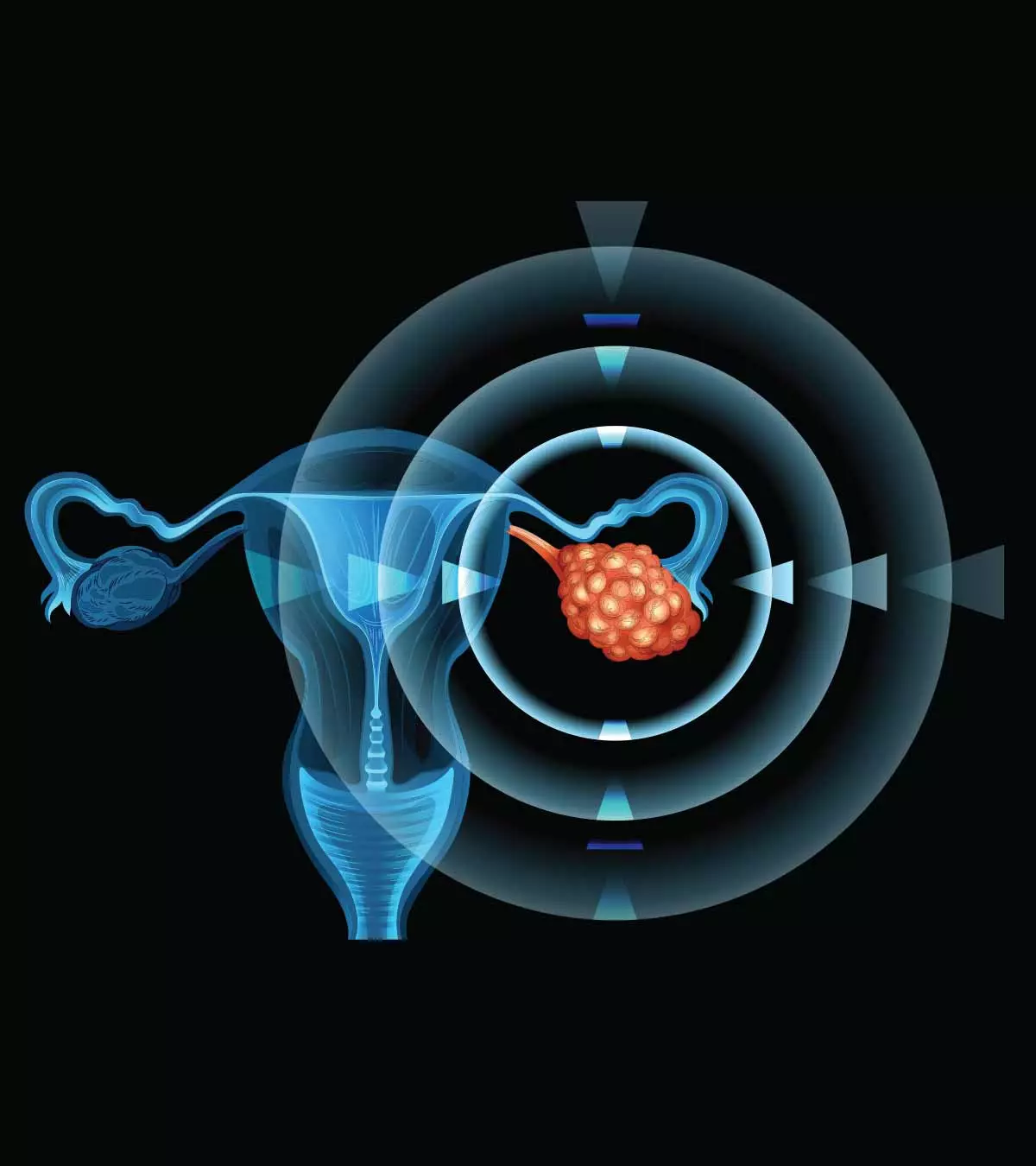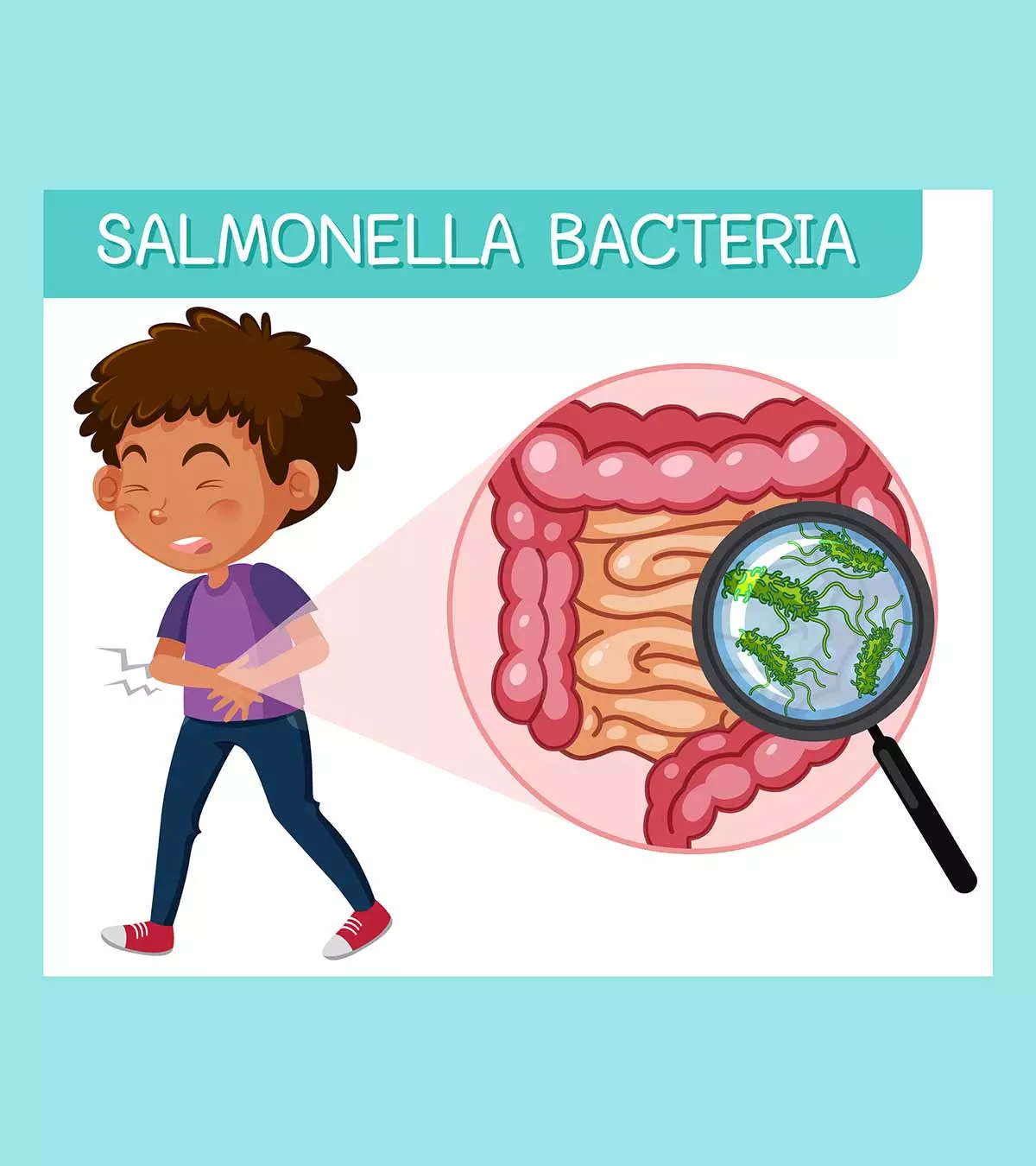
Image: Shutterstock
Salmonellosis or salmonella infection spreads from contaminated food and occurs due to Salmonella bacteria that affect the gastrointestinal tract. Salmonellosis in children occurs from infection induced by consuming contaminated food (mostly poultry, meat, eggs, or milk) or water. Although the bacteria only causes mild stomach flu in children, it may become fatal if the child’s health is already compromised. The complications can also depend on the salmonella serotype.

Preventive measures include good food practices such as thoroughly cooking food and washing hands with water and soap before eating. Read through to know more about salmonella infection in children, including its causes, symptoms, and treatments.
Key Pointers
- Consuming raw eggs, contaminated meat or eggs, and uncooked vegetables or salads are common causes of salmonella infection in children.
- Some signs of salmonella infection are fever, blood in the stool, and chills.
- Meningitis, endocarditis, or dehydration are some common complications of this disease.
- If you notice signs of lethargy or unconsciousness, consult your doctor.
Signs And Symptoms Of Salmonella Infection
According to the Centers for Disease Control and Prevention (CDC), approximately 1.35 million salmonella infections occur each year in the United States, with children under five years being at high risk (13). Salmonellosis symptoms can take from six to 72 hours to start after someone ingests the bacteria.
In most people, the illness lasts for 4 to 7 days after symptoms begin. The common signs and symptoms of a salmonella infection may include the following (1).
- Abdominal cramps
- Diarrhea
- Blood in stool
- Fever
- Nausea
- Vomiting
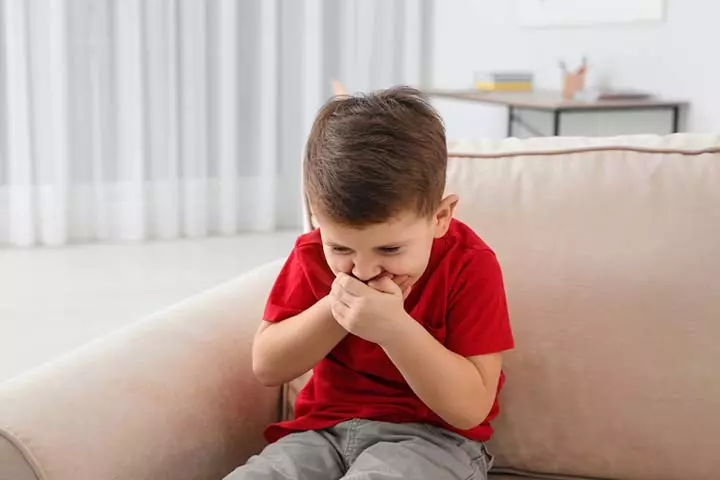
- Chills
- Headache
Salmonellosis may last up to two to seven days. Although the other symptoms disappear, the bacteria may take more time to clear from the body.
Causes Of Salmonella Infection
Salmonella bacteria live in the intestines of people, animals and birds. Most children may get exposed to bacteria from eating contaminated food. Nontyphoidal salmonella may cause self-limiting gastroenteritis (stomach flu) in children. At the same time, Salmonella typhi may cause enteric fever (typhoid fever).
A child may get salmonella through the following sources (2).
- Consumption of raw eggs; homemade mayonnaise and hollandaise sauce. Although eggshells are a barrier, the infected chicken may produce eggs with salmonella even before the shell is formed.
- Seafood harvested from contaminated water can have salmonella.
- Meat and poultry may get contaminated with feces during the butchering process. According to the Centers for Disease Control and Prevention (CDC), chicken is a significant factor contributing to salmonella infection. Also, on average, one in 25 chicken packages in the supermarket contain Salmonella.
- Vegetables and fruits may get contaminated from water in the field or during washing.
- Uncooked or cooked foods, vegetables, and salads could become cross-contaminated in the kitchen by contaminated cutting boards, knives, and other utensils.

- Person-to-person transmission may occur through the fecal-oral route, especially if an infected person does not wash hands after using the toilet.
The US Food and Drug Administration (FDA) also reported cases of salmonellosis through contaminated spices.
Any food product can be contaminated with salmonella if the safety regimes are not followed while processing it.
 Quick fact
Quick factRisk Factors
The following factors may increase the risk of developing salmonellosis in children (3).
- Traveling to areas with poor sanitation and salmonella outbreak
- Having pet birds or reptiles

- Inflammatory bowel disorders that cause damaged intestinal lining, which is favorable for bacteria
- Recent antibiotic use may reduce intestinal flora and impair their ability to fight salmonella
- Excess antacid use reduces stomach acidity and allows more salmonella to survive
- Conditions that cause low immunity, such as AIDS, corticosteroidiA group of steroid hormones produced in the adrenal cortex that are used to reduce inflammation. use, anti-rejection drug treatment after transplant, and sickle cell diseaseiAn inherited condition in which red blood cells become hard, sticky, and sickle-shaped.
Problems with the body’s natural defense system may allow the growth of salmonella in the gastrointestinal tract.
Children with immunity-related issues may have more severe and prolonged salmonellosis than other children.
 Quick fact
Quick factComplications
Young children and children with weakened immune systems may have an increased risk of developing the following complications (3) (4).
- Dehydration
- BacteremiaiPresence of bacteria in the blood that may lead to infection.
- MeningitisiInflammation of the brain and spinal cord membranes.
- OsteomyelitisiInfection-induced bone inflammation causing pain.
- EndocarditisiA rare and fatal infection that causes inflammation of the inner lining of the heart.
- Reiter’s syndrome or reactive arthritisiArthritis that occurs after an infection and causes joint pain and inflammation, urinary tract infections, and eye problems.
Intestinal bleeding, perforation, and neurological complications are commonly seen in typhoidal infections. Nontyphoidal salmonellosis often results in dehydration more than other issues.
When To Consult A Doctor?
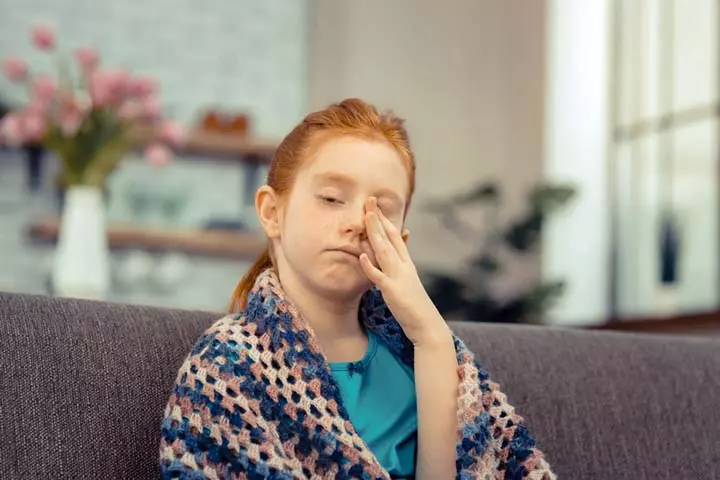
You may call the pediatrician if your child has symptoms of salmonellosis. Seek immediate medical care in the following situations (5).
- Bloody diarrhea
- Signs of dehydration, such as increased thirst, dry mouth, reduced urine, and dizziness
- Severe diarrhea for more than two days
- Lethargy
- Unconsciousness
Diagnosis
Symptoms can be suggestive of salmonella infection. Doctors might ask you for a stool sample, which can be sent to a lab and tested for Salmonella bacteria. Multiple samples are often evaluated. Stool cultures, which help determine the specific serotype of the bacteria, can guide treatment decisions and assess the severity of the infection. Blood tests and blood culture are usually requested for children with fever and gastrointestinal symptoms.
Treatment For Salmonella Infection
Some children may get better without specific medications, and doctors may advise them to consume more fluids to balance the loss. Maintaining hydration is crucial, as dehydration can exacerbate the symptoms of Salmonella infection. Oral intake of electrolyte solutions is often recommended to prevent dehydration. Hospitalization and intravenous (IV) fluid are required for severe cases (6).
Children with severe symptoms may receive antibiotic prescriptions. However, the illness may last longer for some children due to antibiotics. Although the symptoms disappear, children should take antibiotics as per prescription to reduce the recurrence.
Salmonella may take several weeks to clear from the body even after the clinical signs go away.
It is not recommended to give diarrheal medications without prescription since the bacteria may not be eliminated from the body if diarrhea is stopped and illness may become prolonged.
Prevention Of Salmonella Infection
The following tips may reduce the risk of salmonella infection in children (7).
- Practicing good hand hygiene. Washing hands with soap under running water before eating and after using the bathroom may reduce contamination
- Peel or wash fruits and vegetables before eating.
- Clean utensils and cutting boards with soap and hot water.
- Disinfect kitchen counters with disinfectants or bleach.

- Avoid consuming undercooked and uncooked poultry and meat.
- Use a thermometer to know the cooking temperature of poultry and meat and follow the recommended cooking temperatures.
- The internal temperatures of poultry should reach at least 165°F (74°C), while ground meats should reach at least 160°F (71°C) for killing harmful bacteria, including Salmonella (14).
- Get a typhoid vaccine before traveling to high-risk areas.
- Wash hands after touching pets, birds, reptiles, and pet feces.
- Prevent cross-contamination of raw meat with cooked food or utensils. Store raw meat, poultry, and seafood away from other foods in the refrigerator.
- Avoid consumption of raw eggs. In case if your child wants to consume raw eggs, give them pasteurized eggs.
 Quick fact
Quick factFrequently Asked Questions
1. Which antibiotics are used to treat salmonella?
Azithromycin is the antibiotic used as the first line of treatment for salmonella infection in children. Ceftriaxone is an alternative first-line treatment option in cases of severe infection (8).
2. Can probiotics help in fighting salmonella infection?
According to experts, the guided use of probiotics can help prevent or treat salmonellosis (9). Speak to your doctor before using a probiotic supplement to treat or manage your child’s salmonella infection to ensure its safety and efficacy.
3. Is salmonellosis more common in children than adults?
Yes, babies younger than twelve months who are not breastfed and children under five years are more likely to contract salmonella infection than adults (11).
4. How contagious is salmonellosis in children?
Salmonella is a contagious disease although it rarely spreads from one person to another (12).
Salmonellosis in children can be contracted by consuming contaminated food or raw eggs and person-to-person transmission. It is a common illness causing diarrhea in children and may cause complications such as dehydration and meningitis in those with weak immune systems. If your child experiences bloody diarrhea, lethargy, or unconsciousness, seek medical advice promptly. Some children do better without medicines, while others may need antibiotics. In the latter case, completing the course of antibiotic treatment is essential even if the symptoms have disappeared because Salmonella takes several days to clear from the body. Children should also maintain good hygiene and only eat at restaurants that follow the food safety guidelines.
Infographic: Potential Sources Of Salmonella Infection In Children
Salmonella infection in children is caused due to the ingestion of the bacteria and can result in several GI symptoms, such as diarrhea, vomiting, and bloody stools. Therefore, knowing the potential sources that can cause the infection can help to avoid and prevent salmonellosis in children. Check out the infographic below to learn about these sources.
Some thing wrong with infographic shortcode. please verify shortcode syntaxIllustration: Salmonella Infection In Kids: Signs Causes And Treatment
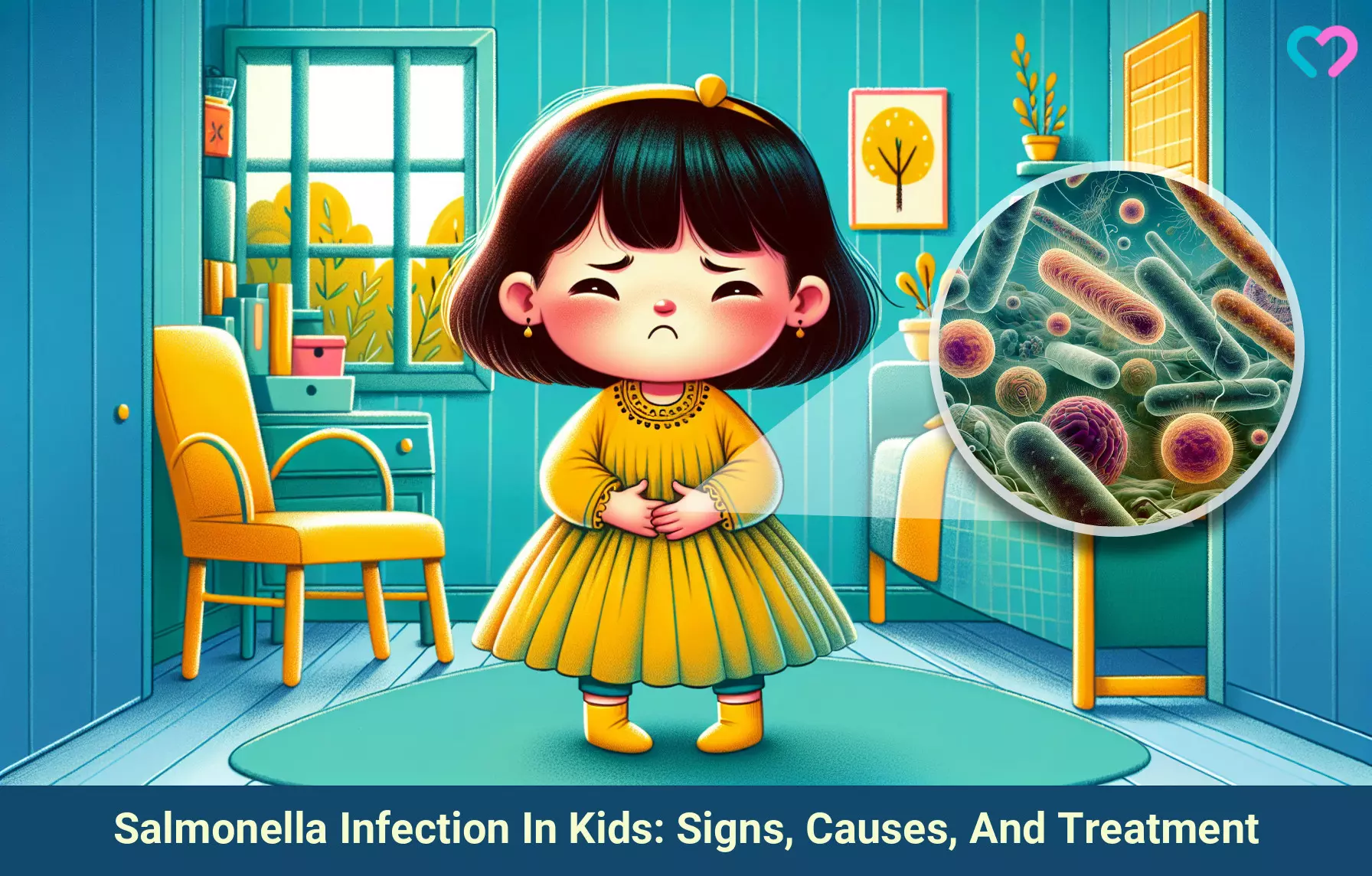
Image: Dalle E/MomJunction Design Team
References
1. Salmonella Infections; Healthychildren; The American Academy of Pediatrics
2. Salmonellosis; C.S. Mott Children’s Hospital
3. Salmonella Infection; St. Clair Hospital
4. Salmonella Infections; Johns Hopkins Medicine
5. Salmonella Infection (Salmonellosis) in Children; Fairview
6. Salmonella; The Centers for Disease Control and Prevention
7. Bacterial & Viral Infections; Rady Children’s Hospital San Diego
8. Advice to Clinicians; CDC
9. Probiotics stop Salmonella in its tracks; European Commission
10. Gastroenteritis- Salmonellosis; Better Health Channel
11. Question and Answer; CDC
12. Infection with Salmonella; CDC
13. About Salmonella Infection; CDC
14. Safe Minimum Internal Temperature Chart: USDA
Community Experiences
Join the conversation and become a part of our nurturing community! Share your stories, experiences, and insights to connect with fellow parents.
Read full bio of Dr. Dur Afshar Agha
Read full bio of Swati Patwal
Read full bio of Rohit Garoo
Read full bio of Shinta Liz Sunny






